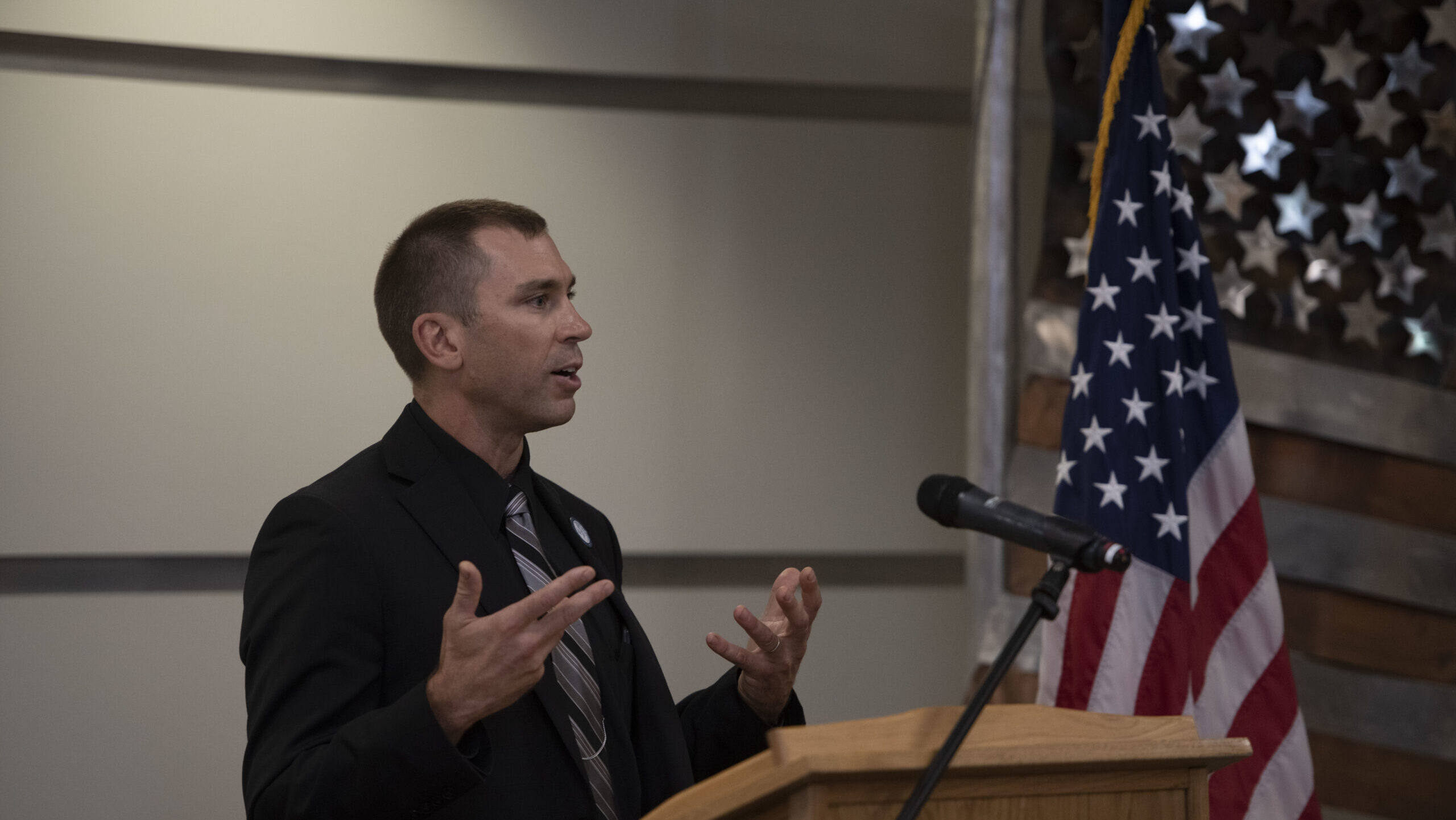
Derek Tournear, Space Development Agency director, delivers a speech during the SDA Test and Checkout Center basing announcement, Aug. 7, 2023, on Grand Forks Air Force Base, North Dakota. (Air Force photo by Airman 1st Class Raisa Christie)
DISC 2024 — The Space Development Agency has placed two solicitations on hold due to the ongoing budget impasse on Capitol Hill, and more crucial objectives will be at risk if the current continuing resolution (CR) drags on, according to the agency’s director.
“It’s incredibly frustrating and worrisome,” SDA Director Derek Tournear told an industry and government audience here at the National Security Space Association’s Defense and Intelligence Space Conference in Reston, Va.
Tournear said a solicitation for a group of eight fire control satellites known as FOO Fighter (Fire-Control On Orbit-Support-To-The-War Fighter), unveiled last year, is now in limbo. Though the source selection for those systems is “almost done,” SDA won’t issue contracts for them without fiscal year 2024 funding, Tournear warned.
A solicitation for a group of 20 satellites in the Tranche 2 Transport Layer dubbed “gamma” will additionally not move forward until FY24 funds are appropriated, according to Tournear. The transport layer satellites are planned to provide data connectivity across the globe, whereas a separate constellation called the tracking layer will offer missile warning and tracking.
Touting SDA’s “tranche” approach of launching new satellites roughly every two years, Tournear said up until now, his agency’s schedule has remained intact. But with the CR extending about halfway into the 2024 fiscal year, “this is the first time there’s been a real threat to being able to continue that cadence we’ve always promulgated,” he said.
The risks of a CR don’t end with those two solicitations, Tournear noted. The current tiered CR lasts just a few more days, with some government agencies set to run out of funding on March 1 and others, like the Pentagon, on March 8. Should the CR extend into April, “then it’s going to be a significant impact to the Space Development Agency. … We’ll have to work with our vendors because we won’t be able to continue paying them. We’ll have to figure out what that means at that point,” Tournear said.
For example, satellites planned for Tranche 1 launches later this year will need to undergo integration, assembly and test events beforehand, but “large milestone payments” are associated with those stages. Similar payments for Tranche 2 satellites, which Tournear said are in the design phase, will be “extremely difficult” to make due to the ongoing CR.
Pentagon officials for months have raised alarm about the havoc a prolonged CR could wreak on high-profile modernization efforts, particularly if stopgap funding extends beyond April. Under the terms of the Fiscal Responsibility Act signed into law last year, the FY23 topline will automatically be cut by 1 percent if a new budget isn’t in place by the beginning of May. Space programs would especially suffer under those conditions, Department of the Air Force officials have warned.
“We need a budget to be able to continue to fund this,” Tournear said. “We always assume there will be a continuing resolution for a few months, but not six to 12.”






















